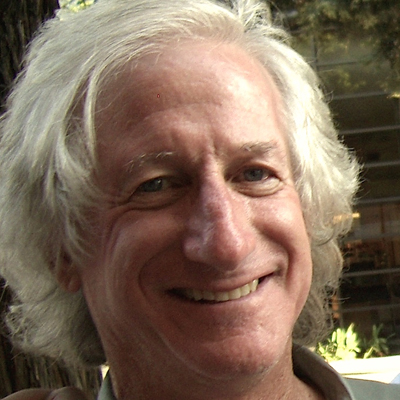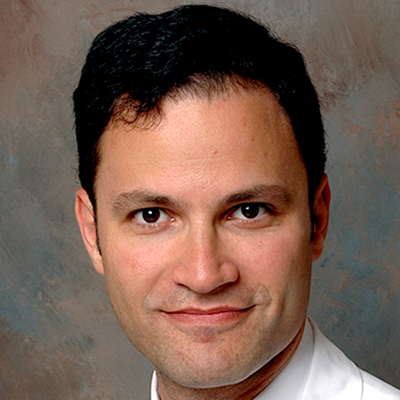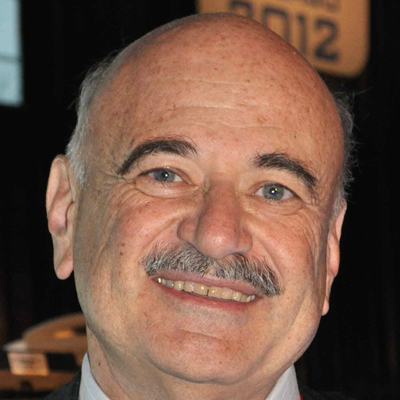Seeing the Big Picture in Medical Science
A 21st-century collaborative framework has the potential to deliver more effective and affordable therapies by aligning and engaging all sectors of society.
By Julian Gresser, Jeffrey L. Goldberg, & Alfredo A. Sadun Jul. 28, 2016
More than one billion people today are suffering or dying from some form of neurodegenerative disease, and the economic costs mount each year as the global population ages. The worldwide impact of brain-related illnesses exceeds $2 trillion a year, and the US burden accounts for more than $1.3 trillion of nondiscretionary health care spending. Last year the global cost of Alzheimer’s disease (AD) and dementia was estimated at more than $605 billion, equivalent to 1 percent of the planet’s GDP. If the present trend continues, the health care cost for AD in the United States alone may exceed $1.1 trillion by 2050. Despite the dedication and progress of top scientists, and billions in government and corporate investment around the world over the past 30 years, we still do not have cures for AD or other major neurodegenerative diseases. The core sectors—government, academia, and industry—are not well aligned to cope with a global human and economic catastrophe of this magnitude.
However, there is an underexplored alternative—what we call a “catalyst of convergence”—that has the potential to deliver better results, in a shorter period of time, and at significantly reduced costs to society.
Better Metrics as a Game Changer
Throughout history, new and better metrics have been transformative agents in science, as well as drivers of economic growth and societal change. Louis Pasteur’s discovery of molecular chirality—a way of measuring biochemical structures—not only triggered advances in the science of fermentation, but also led directly to the germ theory of disease. We have a comparable opportunity today with imaging science to drive innovations for neurodegenerative diseases.
The essential advance is a new and better biomarker, or family of biomarkers—an objective, quantifiable laboratory measurement of disease. Because of the difficulty in gaining access to the brain, we do not currently possess an effective biomarker for neurodegenerative disease. At least since 1987, scientists have observed common patterns among diseases such as AD and glaucoma based on the eye-brain connection. Specifically, the ganglion cells in the retina and their axons carrying visual information through the optic nerve to the brain are extensions of the central nervous system that we can directly visualize and analyze. Since the retina and optic nerve head are visible, accessible, and measurable, the opportunity to approach neurodegenerative disease using new and powerful technological advances in measurement is palpable. For example, the combination of optical coherence tomography, adaptive optics, and perhaps other structural and metabolic imaging technologies can enable medical professionals today to take precise, granular measurements at a sub-cellular level to see, for example, dysfunction and structural abnormalities in mitochondria, the energy factory of the cell. These powerful new tools will enable scientists not only to characterize the nature of the disease (for example, there are different forms of AD and glaucoma), but also to assess rapidly the pathway of the disease’s development, and most practically, the efficacy of candidate therapies.
Social Innovation Engine
We propose a 21st-century, public-good model to support collaborative innovation in science, technology, and business. In economics, a “public good” is a product or service that one person can consume without reducing its availability to other users and where no one is excluded. A template biomarker for neurodegenerative disease has the potential to offer the universal benefits to society of a public good—if we can find an effective process to accelerate its rapid diffusion and assimilation.
The tide in medical research is rapidly moving toward collaboration. The Guthy-Jackson Charitable Foundation (GJF) is implementing a particularly successful model for the rare neurodegenerative disease neuromyletis optica. GJF’s mission is to reach broadly beyond conventional professional silos to find common ground in the search for a cure. Last April, Silicon Valley billionaire Sean Parker announced that he was donating $250 million of his own money to launch a consortium, which now involves 300 scientists working at 40 labs at six leading research centers to advance immunotherapies for cancer. Another recent example is the gift by Sandy and Joan Weil of $185 million to support collaborative brain research at 45 new labs at the University of California in San Francisco. Every major neurodegenerative disease today—including AD, glaucoma, Parkinson’s, multiple sclerosis, and autism—has its own advocacy consortium, but all confront a common challenge of bureaucracy and incrementalism that can squeeze the life out of audacious and innovative initiatives. We need to increase the potency of such collaborations, and the following framework can help.
A humanitarian mission. To begin, we can adapt a business organizational form originally conceived as a vehicle for competitive advantage—the Collaborative Innovation Network (COIN)—to advance an essentially humanitarian mission: to deliver benefits of innovative biomarkers to the largest number of people, in the shortest period of time, and at an affordable cost. At present “we” refers to an expanding network of networks, including research, non-profit, and business institutions. Collectively this consortium possesses the broad scientific expertise, practical business experience, and technologies to accomplish its humanitarian mission. All the resources of the COIN are open to all.
Sustainable trust. Sustainable trust is the linchpin in every effective COIN. Without trust, players claw for narrow competitive advantage. No one is motivated to seek the broader view, the bigger picture. Neuroscientists have recently discovered how the creative capacity of the mind is enhanced by the vision, wisdom, balance, and ethical attributes of the heart. The ultimate success of the COIN will depend on whether the participants can continuously engage in a spirit of generosity, altruism, and creativity. Our team has developed principles, processes, and metrics to enable organizations to establish what we call “big heart intelligence” as part of their cultural DNA. This evolving body of practice is the bedrock of the biomarker COIN.
Business and legal architecture. The business and legal architecture of a COIN, and the specific processes by which a COIN achieves its goals, can establish a culture that is big-hearted, principled, and fair. Under its present framework, an alliance innovation team representing the founding organizations will serve as COIN’s initial manager, integrator, and central clearinghouse. The team maintains the integrity of the COIN. Its first task is to prepare a charter that expresses the passion and vision of the members, and also addresses in simple non-legal terms their concerns over equity, fair credit, and compensation. The charter is intended as a flexible, non-legally binding, “living” document that expresses the emergent narrative of the COIN.
Ownership of intellectual property often becomes a sticking point, especially when the collaboration begins to bear fruit. A legal innovation, the “mega-patent,” may offer one practical way for participants to optimize the value of their contributions. A mega-patent refers to a single patent artfully designed to combine and integrate each inventor’s contribution to achieve greatest competitive value. It makes no sense in a close cooperative business relationship, where inventive ideas come from dynamic creative exchange, for one party to seek a competitive advantage against its co-explorers by filing separate patents citing its own inventions as earlier in time and novelty. In the present instance, a template AD biomarker would certainly be the collective result not only of the core scientific team’s inspirations in biology and neuroscience, but also engineers’ inventions in hardware design and new software algorithms, the continuous “insights” of the intelligent platform itself, and perhaps contributions of non-expert “citizen scientists.” The template biomarker is a perfect candidate for a mega-patent.
The issue of who fairly benefits from the mega-patent is a closely related but separate matter. Under the proposed model, the goal is to build the strongest possible intellectual property portfolio to create value for the COIN while allocating the benefits of this asset—including revenues derived from the portfolio under the terms of a legal contract. The use of strategic alliance mediation, a new subspecialty that combines the best practices of third-party facilitation and mediation with expertise in strategic alliances, can fairly and efficiently address differences and disputes over intellectual property.
Applications and assimilation. Practical applications will drive the rapid diffusion and assimilation of a biomarker in this case.
- Accelerated Therapies. As soon as a template biomarker is widely available, every biopharma company with a promising drug for AD or other neurodegenerative disease will have an objective and inexpensive means to gauge its therapy’s efficacy. At present, it is extremely expensive and difficult for a large biopharma company to change course once it makes a significant investment in a long-term drug development program. (Scientific American reports the cost of developing a new drug exceeds $2.5 billion.) An effective biomarker will enable rapid iteration and adaptation, especially at critical early stages, which will powerfully encourage innovation. Moreover, shortening the time-to-market of a candidate drug will increase the value of the supporting patent portfolio. The focus on a biomarker based on mitochondria may itself open a unique opportunity. The field of mitochondria research is an exploding new frontier with broad implications for many fields of medicine. The intriguing question is: If mitochondria dysfunction is an important indicator of a broad spectrum of neurodegenerative diseases, might repairing structural abnormalities and enhancing mitochondria function point the way to therapeutic advances for neurodegenerative diseases? This is an ideal “strategic discovery challenge” for the creative energies of the COIN.
- Multi-modal trials. The versatility of a template biomarker may open the possibility of multi-modal trials, in which the same biomarker can be used to test simultaneously for several neurodegenerative diseases. This strategy could reduce the number of patients required for each trial, and enable rapid iteration based on smaller samples with huge attendant savings in time and cost. The availability of a simple and safe biomarker will also encourage more patients to participate in these trials.
- Health care advocacy and education. Easy access to an accurate and inexpensive biomarker can become a formidable advocacy tool. At present, insurance companies are denying promising drugs by using the contractual “medical necessity” standard to justify profit-optimization strategies. This practice is impairing the quality of care of thousands of patients. It is also discouraging innovation by making it even more financially risky and expensive to develop promising new therapies. The availability of an objective standard to challenge arbitrary denials will be a formidable tool for advocates representing patients in their negotiations with insurance companies. A reliable and accurate standard of measurement will also be valuable to members of Congress and the Executive Branch in reaching more-informed decisions on budgetary allocations for neurodegenerative disease.
- Intelligent information technology (IT) platform. The rapid adoption of the template biomarker by hundreds of thousands of users will generate massive data sets that will be a common asset of the COIN, freely available to all its members. The platform will integrate frontier innovations in advanced search, collaborative research, discovery engineering, and data analytics, including “big mechanism.” Big Mechanism is the brain-child of DARPA. It enables the integration of widely diverse domains of knowledge to build causal models. DARPA is currently providing seed funding to develop a multi-causal model for cancer. Neurodegenerative disease is ripe for Big Mechanism. The COIN platform will learn on its own, and provide each member with a personalized, continuous stream of insights and connections. Specialists are adroit at recognizing patterns within their discipline, but are less able to detect and appreciate larger holistic and emergent patterns. The intelligent platform will become a trusted ally to perform this function. By its very nature it will encourage serendipity and surprise—the fountainhead of breakthroughs in medicine and other domains of science. A beta version of the platform can be available within six to nine months.
New Horizons
We have an opportunity to shift course in our current approach to neurodegenerative disease. Broad access to a safe, objective, and precise biomarker coupled to an effective collaborative framework may open new horizons scarcely conceivable today. The opportunity is made possible by modern technologies, while the spirit of the enterprise is aligned with the early and noblest traditions of medicine. In implementing the COIN, we can learn how to collaborate more wisely and effectively, to find direct applications in other fields of medicine (cancer and cardiovascular disease being prime candidates), and from this experience to be better prepared to grapple with other urgent global challen
 Julian Gresser is chairman of Alliances for Discovery; co-founder of Neurogenics; twice Visiting Mitsubishi Professor at Harvard Law School; and visiting professor in MIT’s Program on Science, Technology, and Society. His most recent book
Julian Gresser is chairman of Alliances for Discovery; co-founder of Neurogenics; twice Visiting Mitsubishi Professor at Harvard Law School; and visiting professor in MIT’s Program on Science, Technology, and Society. His most recent book  Jeffrey L. Goldberg is professor and chair of ophthalmology, and director of
Jeffrey L. Goldberg is professor and chair of ophthalmology, and director of  Alfredo A. Sadun is director of the
Alfredo A. Sadun is director of the 
Leave a Comment